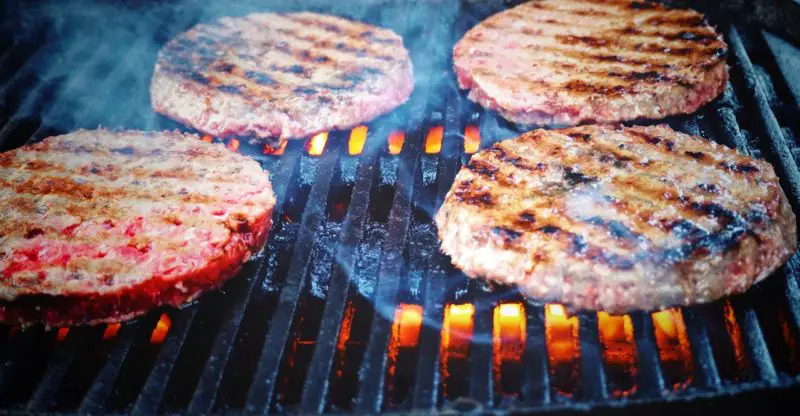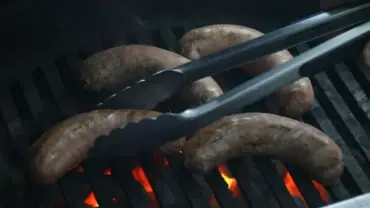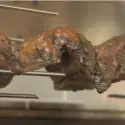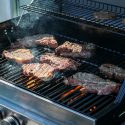Best Temperature to Grill Burgers in 2024
Has it ever occurred to you that you may be grilling burgers all wrong? For most grilling masters, one of the best things they can do is make tasty, smoked burger patties. Just like grilling meat, the art of grilling burger patties determined how tasty the result is. The process of grilling the best burgers begins long before placing the piece of ground beet on the grates. The process involves picking the right beef cut, grounding it, and turning it into mouthwatering, juicy burger patties.
Temperature control is one of the most important aspects that determine how perfect your grilled patties are. There are millions of ways to prepare beef patties, depending on your seasoning preference, spice, and meat cut. Regardless of your preference, the perfect burger should be grilled at the right temperature.
Here is everything you need to know about grilling burgers and temperature requirements.
The best temperature to grill burgers guide
The science behind temperature guidelines
The first thing you need to know is that every pre-ground meat must be grilled at an internal temperature not less than 160°F. This is a requirement by the USDA to ensure that all bacteria that may be lingering in the ground meat are killed during the cooking process for food safety. When grilling ground poultry, you will need to ensure the internal temperature hits 165°F, for it to be safe for human consumption.
Bacteria on whole meat resides on the surface, which makes it possible for the steak to be grilled at temperatures under165°F. Bacteria cannot penetrate the surface of the meat to contaminate the inside. Therefore, steak can be seared at a 130°F for medium-rare, and be fit for human consumption. At this temperature, all the bacteria on the steak is killed.
When you take the steak and ground it for burger patties, any bacteria on the surface mixes throughout the meat. This creates new breeding places for the bacteria in other parts of the meat. This is why you are required to ensure the temperature at the center of the patty is not less than 160°F before terming the patty as fit for consumption. The USDA has found this temperature range to be the most ideal for killing all present bacteria in ground meat. This is the only way a burger can be fit for human consumption.
To ensure you can measure the most accurate temperatures on your grilled patties, invest in the best probing thermometer for grilling.
The risks associated with ground beef
As stated earlier, ground beef is more susceptible to contamination than whole cuts of meat. Pre-ground beef can be sourced from different cows to get the required quantities. All single-sourced ground beef packs are stated as so in the packaging. If you prefer to use this type of meat, you need to check to ensure you only buy the single-sourced category. If it is not stated on the pack, it means that the ground beef processed from meat derived from different cows to get the final product. This would increase the chances of meat contamination if one of the sources had bacteria.
The grinding process distributes the bacteria to the whole batch, which is sent to different markets all over the state. This makes it easy for the bad batch to gain access to your kitchen.
The USDA cooking temperature guidelines
When most chefs are asked, the USDA food temperature rules are too stringent. However, these rules are in place for the benefit of the consumer to prevent widespread disease outbreaks. Most restaurants and chefs work together with the USDA and local health departments to ensure they follow the strict protocol in serving healthy meat.
For home grilling purposes, your best bet is to grill at the required 160°F minimum internal temperature for store-bought ground beef to ensure you serve healthy, bacteria-free burgers to your family and guests.
To reduce the risk of contamination:
- Ensure you store your ground beef below the temperature safety zone of 40°F or below.
- Use a clean prep area and container for your raw ground beet when preparing your patties
- Wash your hands before handling raw ground beef
- Sanitize kitchen surfaces before and after making your patties
- Keep ready to east patties away from raw patties.
Best temperatures to grill burgers for the best results
Even though the minimum recommended temperature for burgers is 160°F, you can play with the temperature ranges if you are grilling your own beef at home.
Well Done: 160°F to 165°F – this results in a tough and dry patty. It is the best temperature for the store-bought ground beef. This is the only safe temperature to ensure you do not serve contaminated burgers at home. The alternative is to pasteurize the meat at 140°F for at least twelve minutes before grilling it.
Medium Well: 150°F to 155°F – this is an ideal temperature for homemade ground beef. The result is a patty with a pink coloring in the center. The outside will start to dry out as an indication that it is almost medium well.
Medium: 140°F to 145°F – this is also an ideal temperature range for home ground meat. It results in a pink patty throughout the inside of the patty
Medium Rare: 130°F to 135°F – when you take the proper precaution, like storing your meat safe and grinding it in hygienic conditions, medium-rare is the best way to have your burger patties. You can eat the patty once the internal temperatures are between 130°F to 135°F.
These are the best temperatures to cook and eat meat or burgers at home. While some people wat meat rare, it is not recommended or safe for human consumption.
The two-stage burger-grilling method
This involves creating two heat zones on your grill, one low heat side, and a high heat side. For the first stage of cooking, you need to place your burgers on the grill’s low heat side. This allows the indirect heat from the hot side to slow cook your burgers at a controlled pace. Once the inside of the burger reaches 20°F, you need to move it to the high heat zone on the grill to sear to the required temperature.
Using this method to cook your burgers gives you a better chance of attaining the preferred temperatures and doneness.








